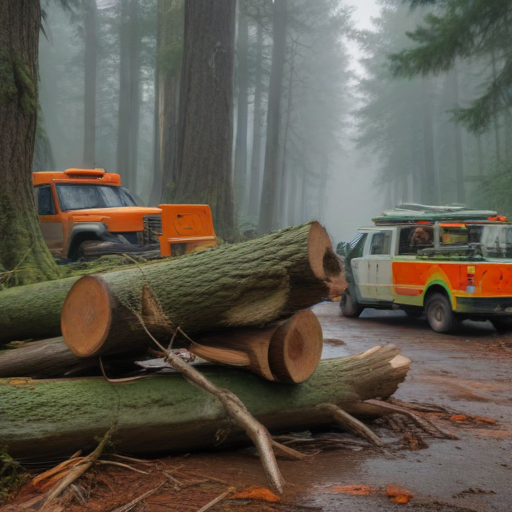The Pacific Northwest is grappling with significant storm damage and extensive power outages as a bomb cyclone impacted the region. Reports indicate gusts exceeding 70 mph in various areas. The situation remains critical, with live updates available for those seeking the latest developments.
In Issaquah, Washington, images depict substantial devastation, including roads obstructed by downed trees and branches, as well as damaged power lines. This scene illustrates the urgent challenges local communities face in the aftermath of the storm, which is still causing disruptions. Fortunately, there have been no injuries reported from a major incident where a large tree fell on a King County Metro bus during the storm. The rapid response of the Bellevue Fire Department ensured the safety of the bus passengers.
Puget Sound Energy has reported considerable damage to its infrastructure due to the storm, advising customers to prepare for extended outages while repairs are underway. As of the latest counts, power outages in Washington decreased from a peak of around 600,000 to approximately 491,000, while over 38,000 customers in California also faced outages.
Many residents took precautions in anticipation of the storm. Tracy Meloy from Issaquah described her night of anxious listening as wind and debris battered her home. Post-storm, she surveyed her neighborhood, noting downed power lines and scattered debris.
The storm’s intensity is underscored by its classification as one of the strongest recorded in the northeastern Pacific, with a pressure reading comparable to a historic 2021 storm. The phenomenon known as “bombogenesis” indicates the storm’s rapid intensification, which can lead to more severe weather events.
Recovery efforts are underway, with crews assessing damage and working to restore services, including delays in public transportation due to downed trees along major routes. Compounding the situation, a long-lasting atmospheric river is expected to bring heavy rain and snowfall to Northern California and Southern Oregon, potentially exacerbating conditions. Flash flooding and landslide risks are heightened in fire-damaged areas.
Despite the challenges, local agencies and emergency responders are working diligently to assist affected communities and restore normalcy. The resilience of these communities is on display as they unite in the face of adversity, showcasing their preparedness and community spirit.
In summary, while the storm has caused significant disruption and distress in the Northwest, the concerted efforts of responders and communities inspire hope for recovery and resilience in the wake of these challenges.
